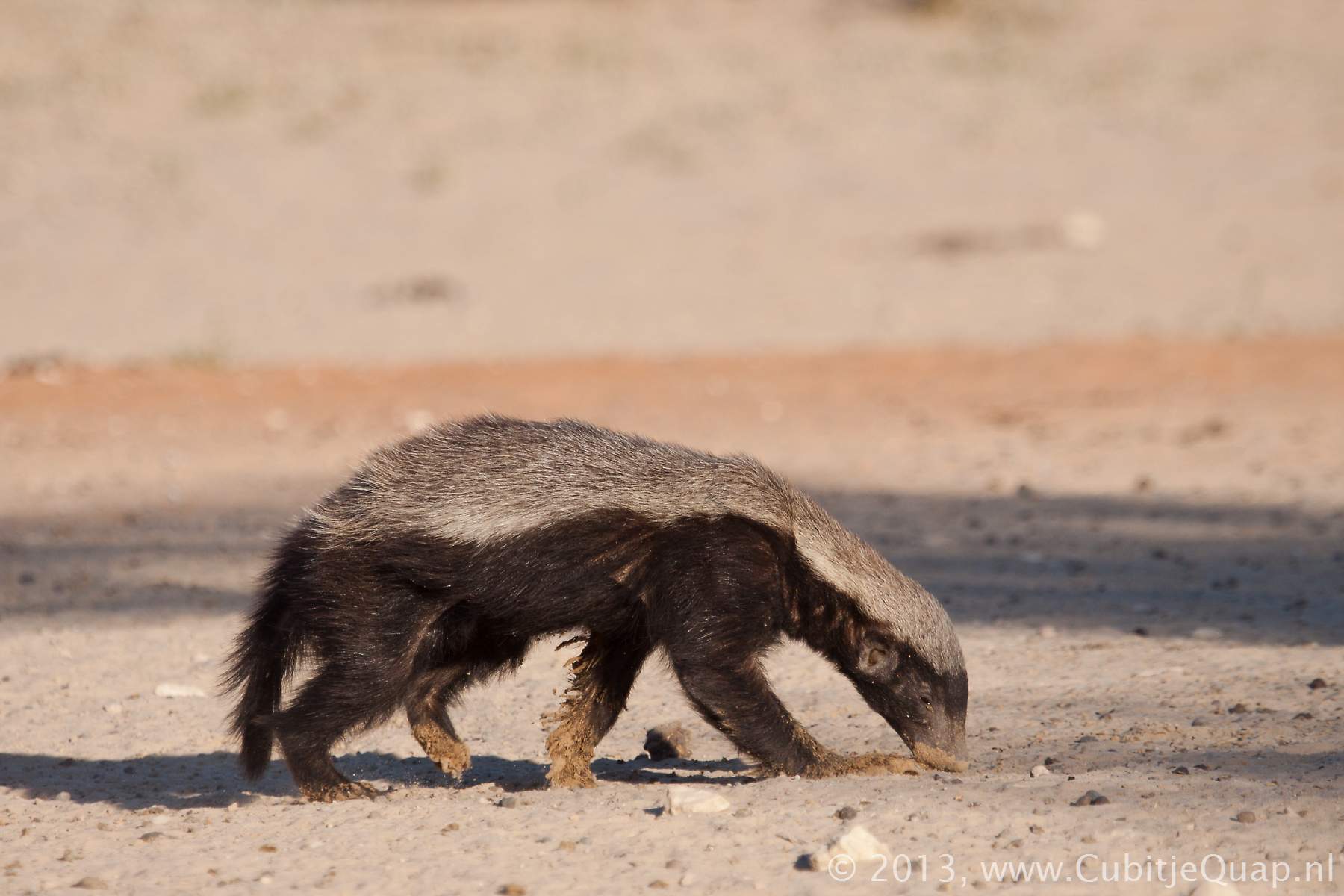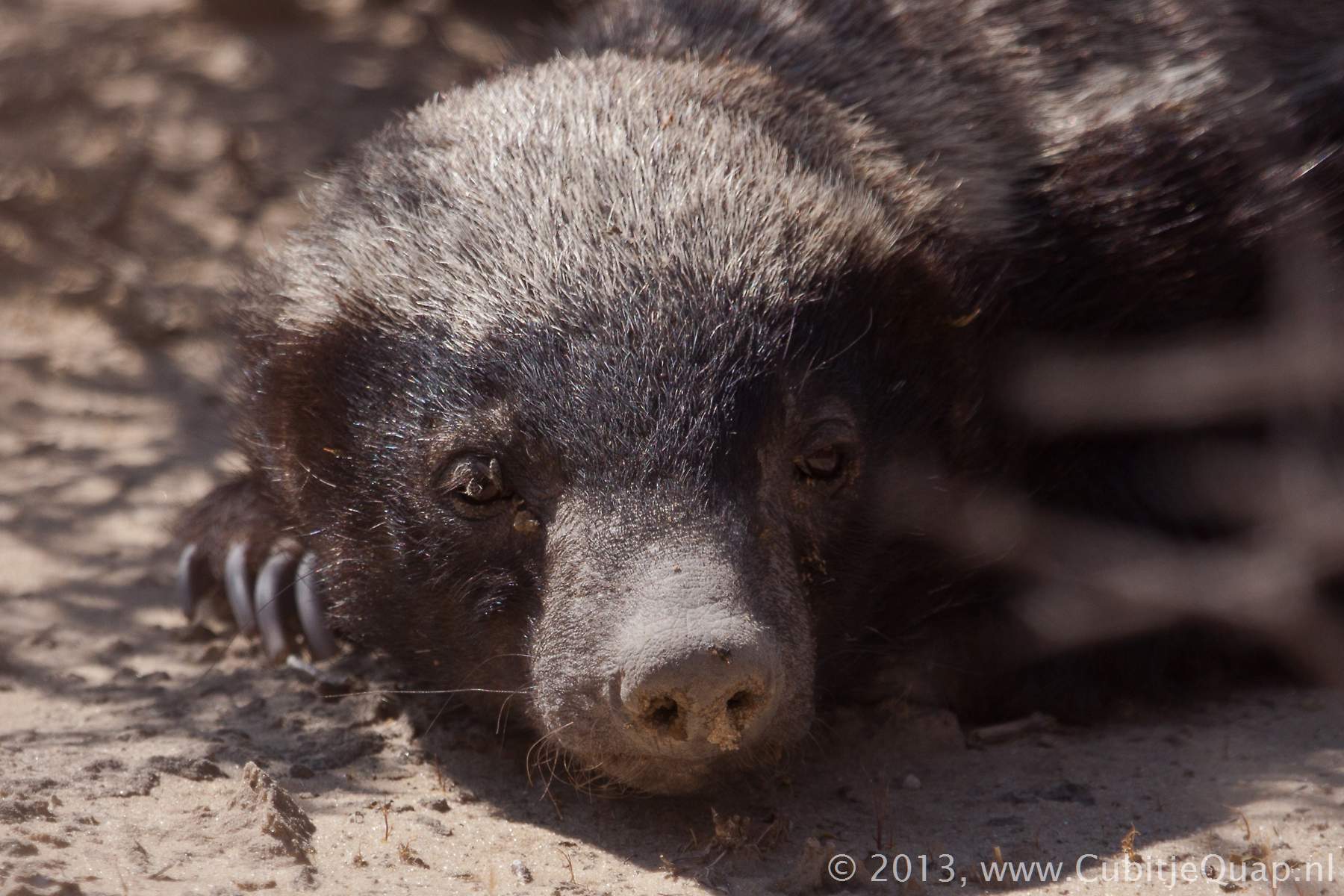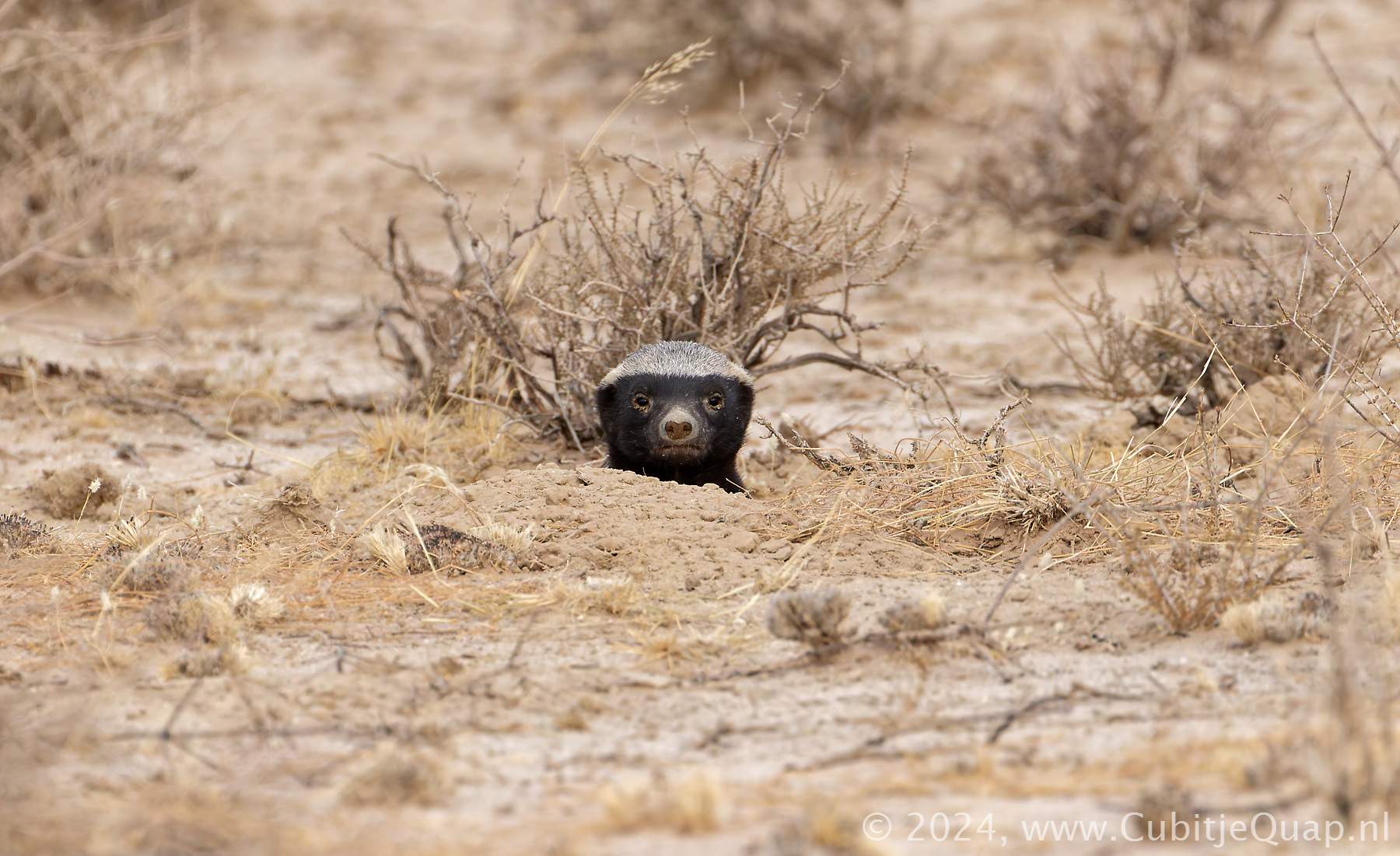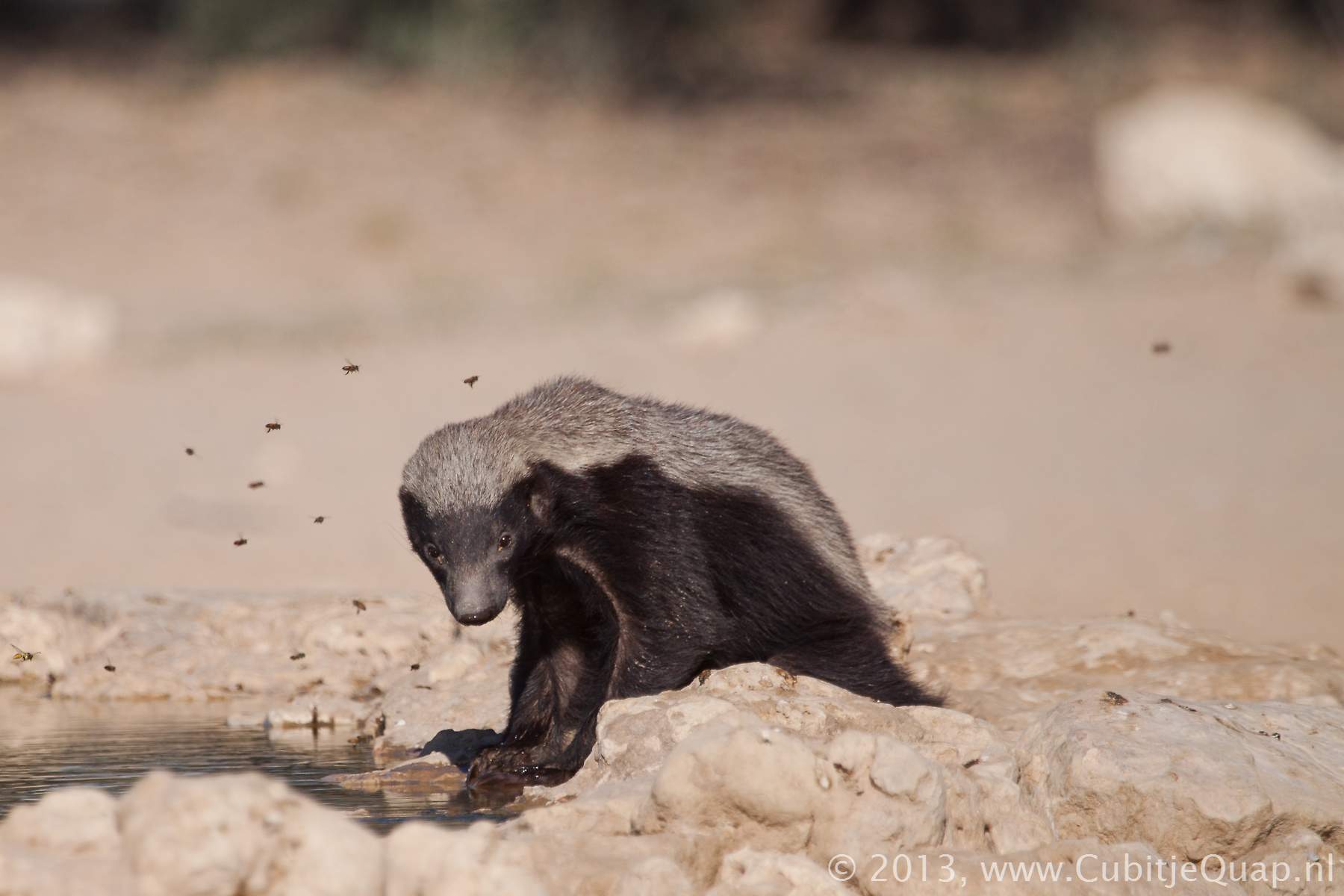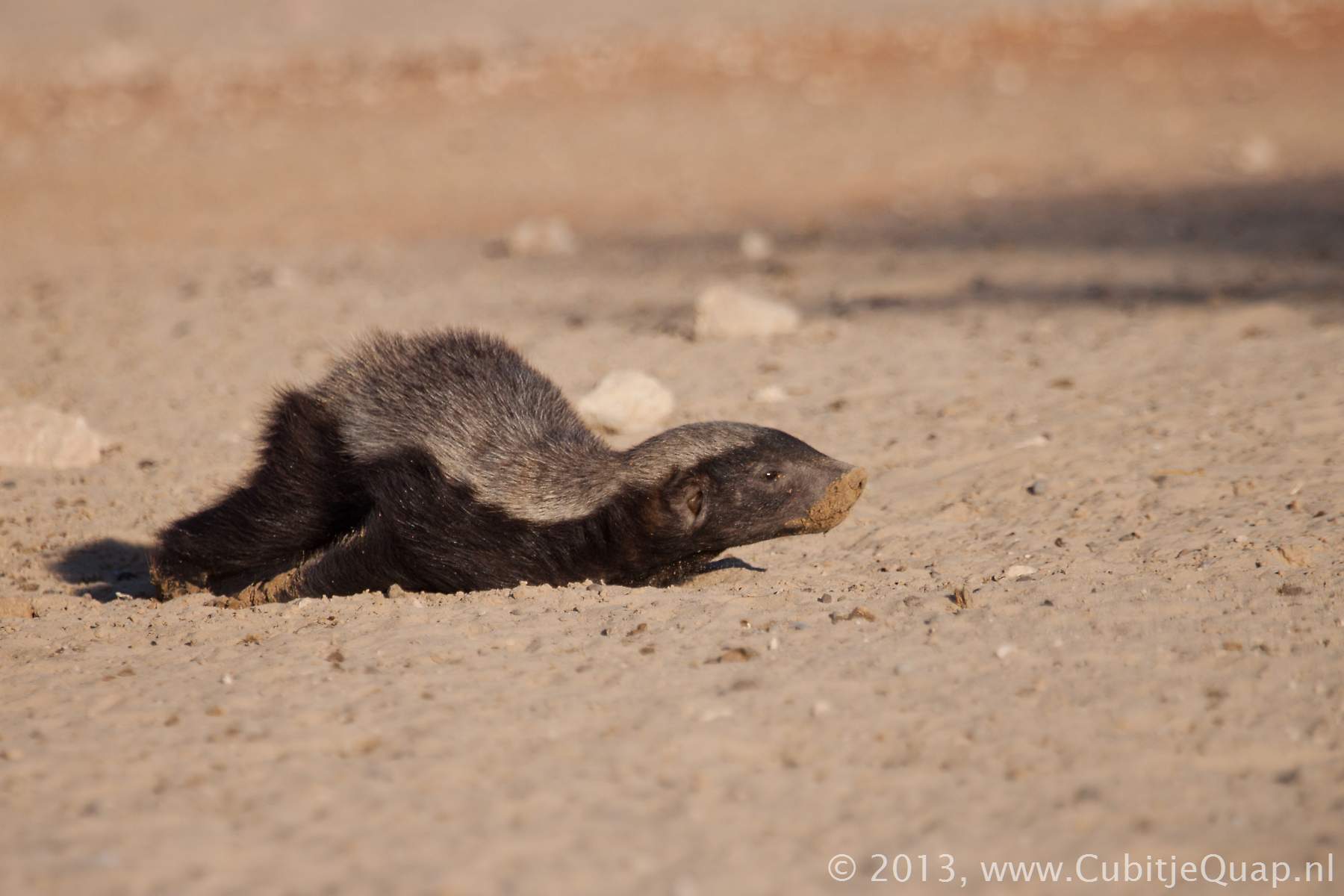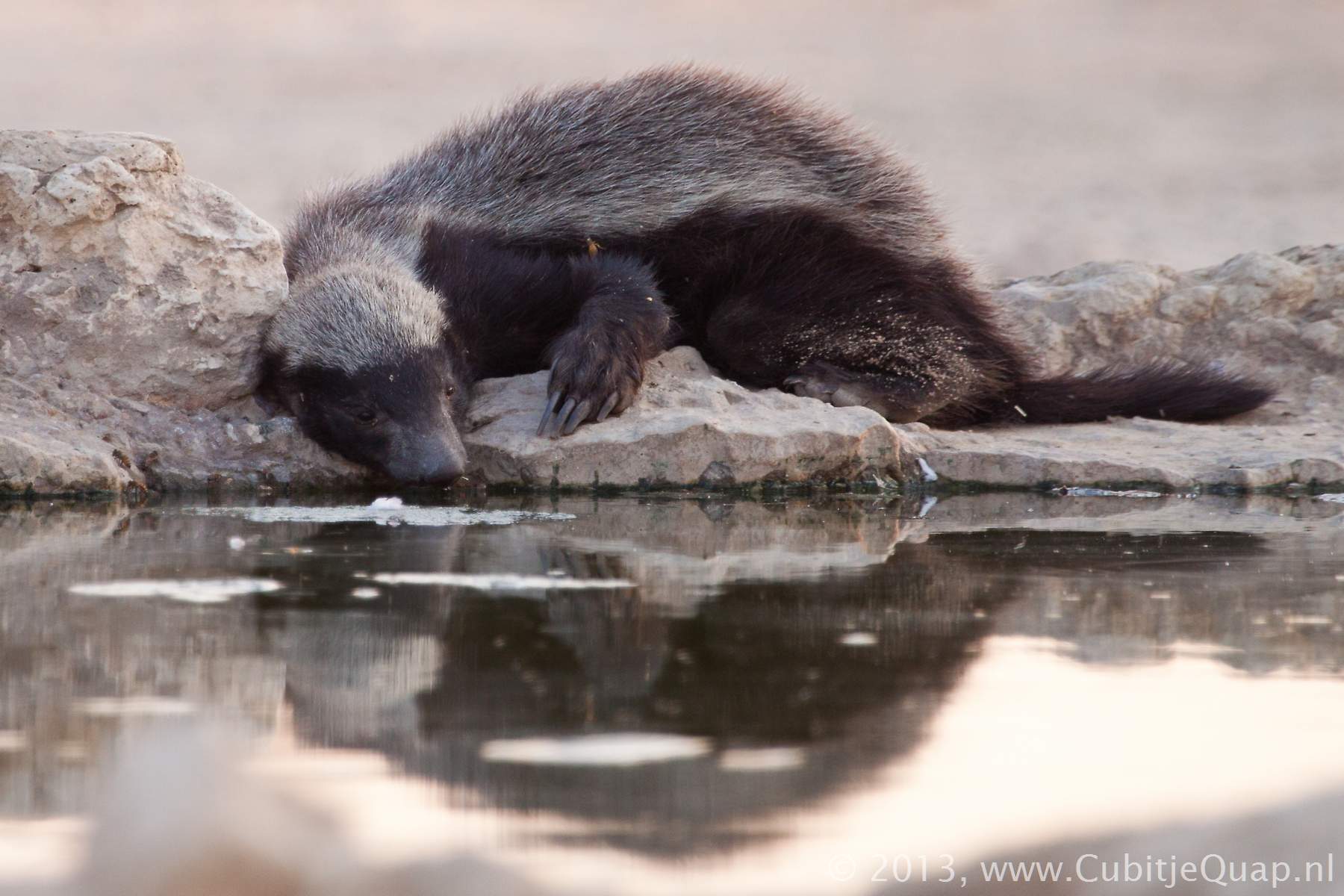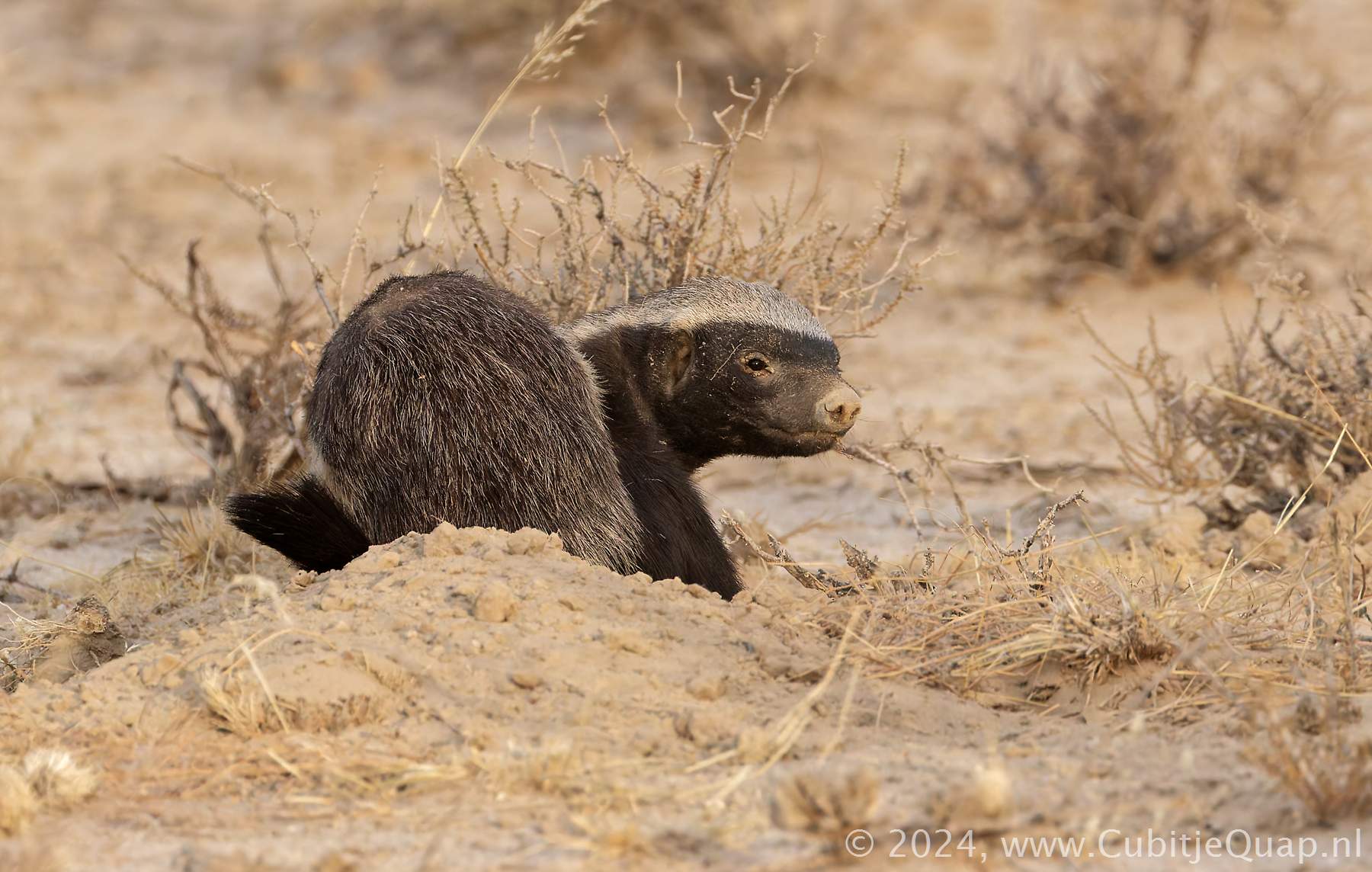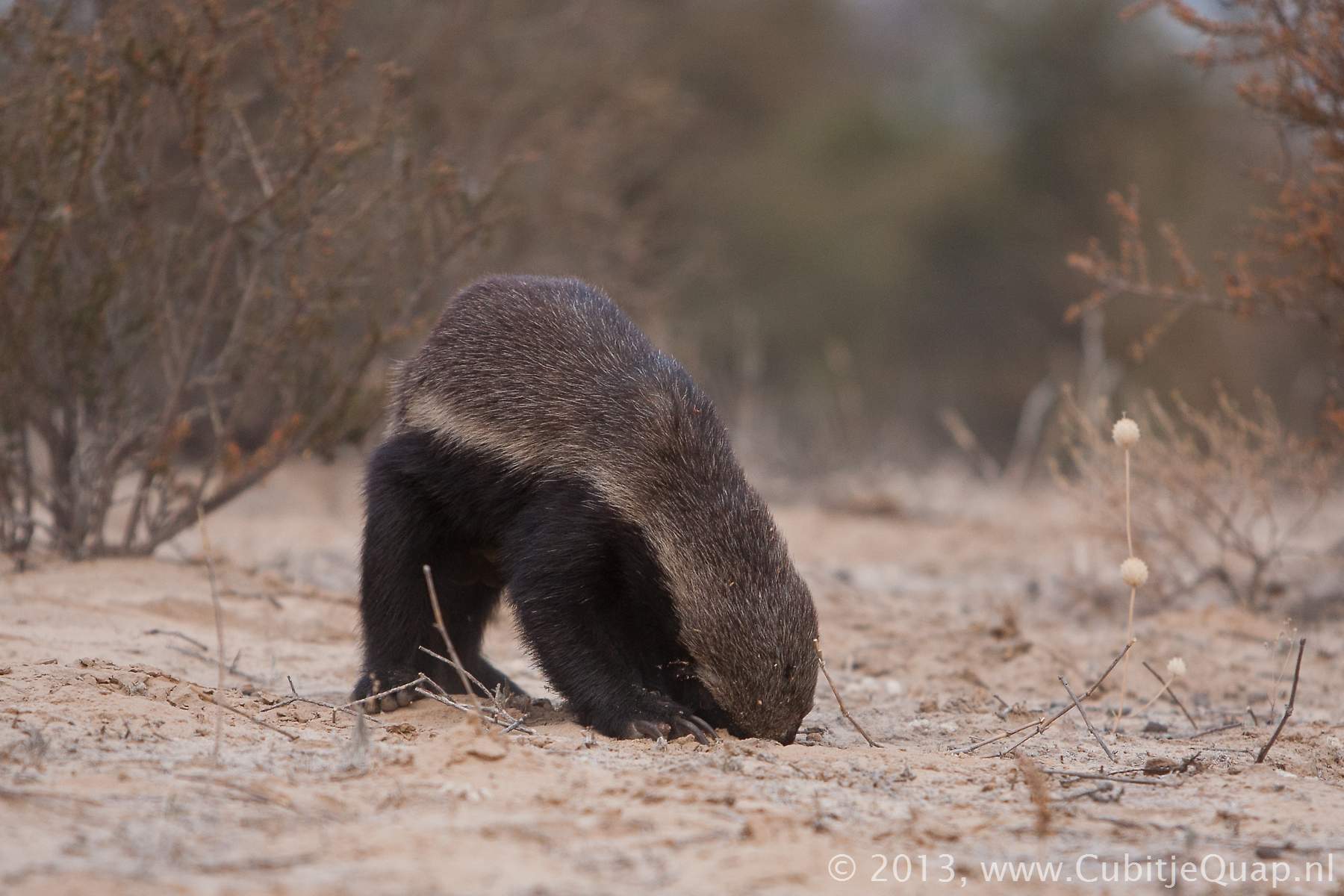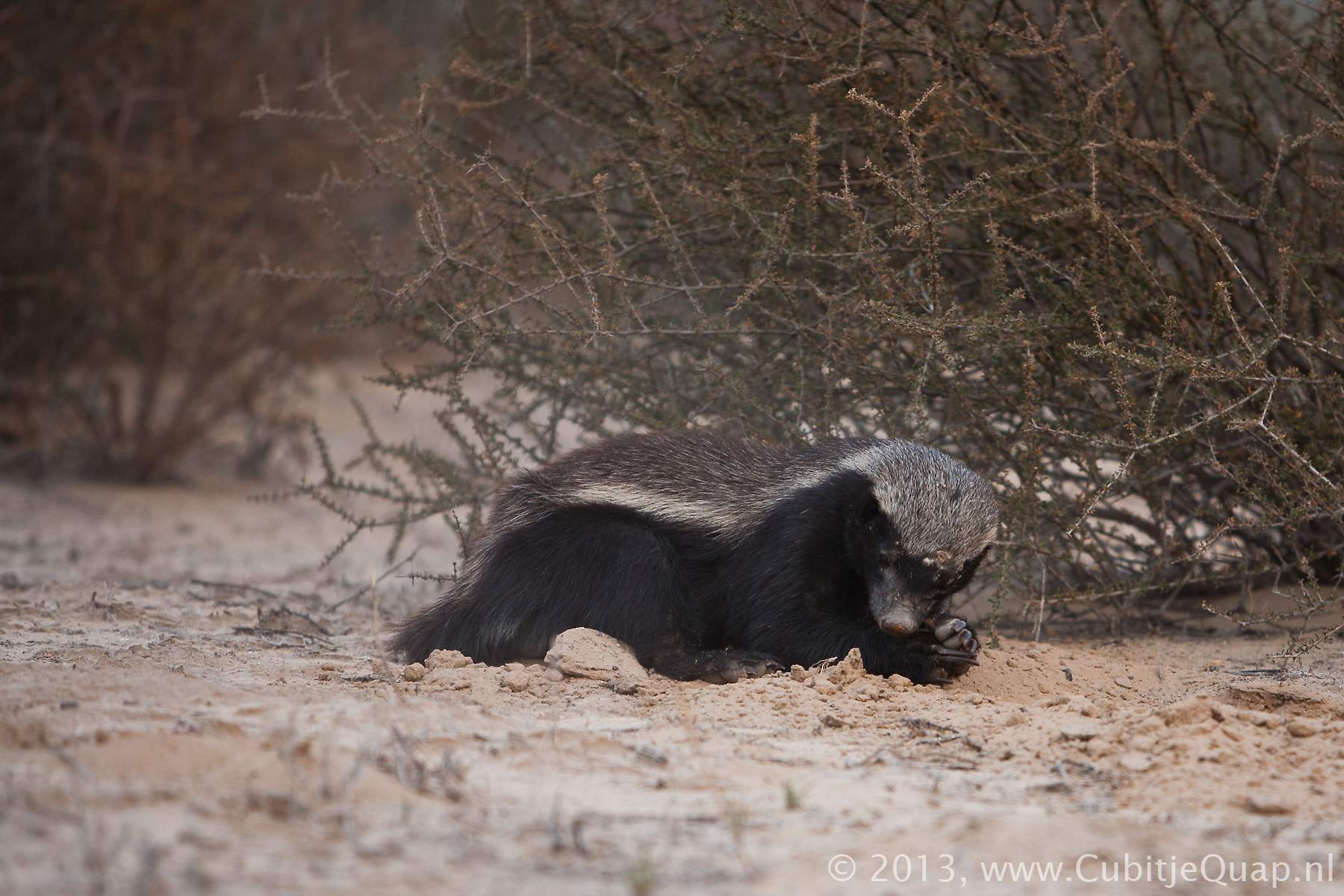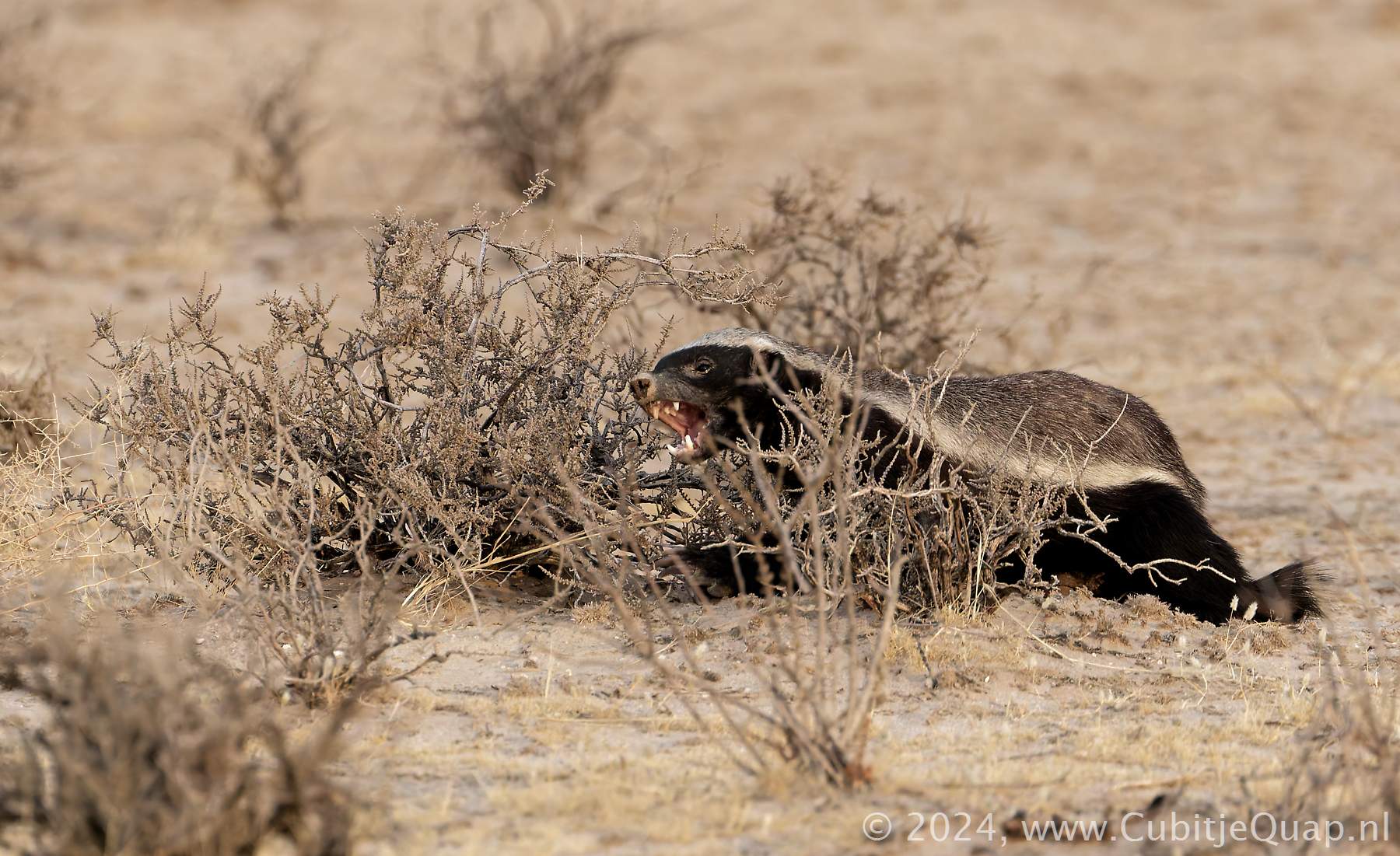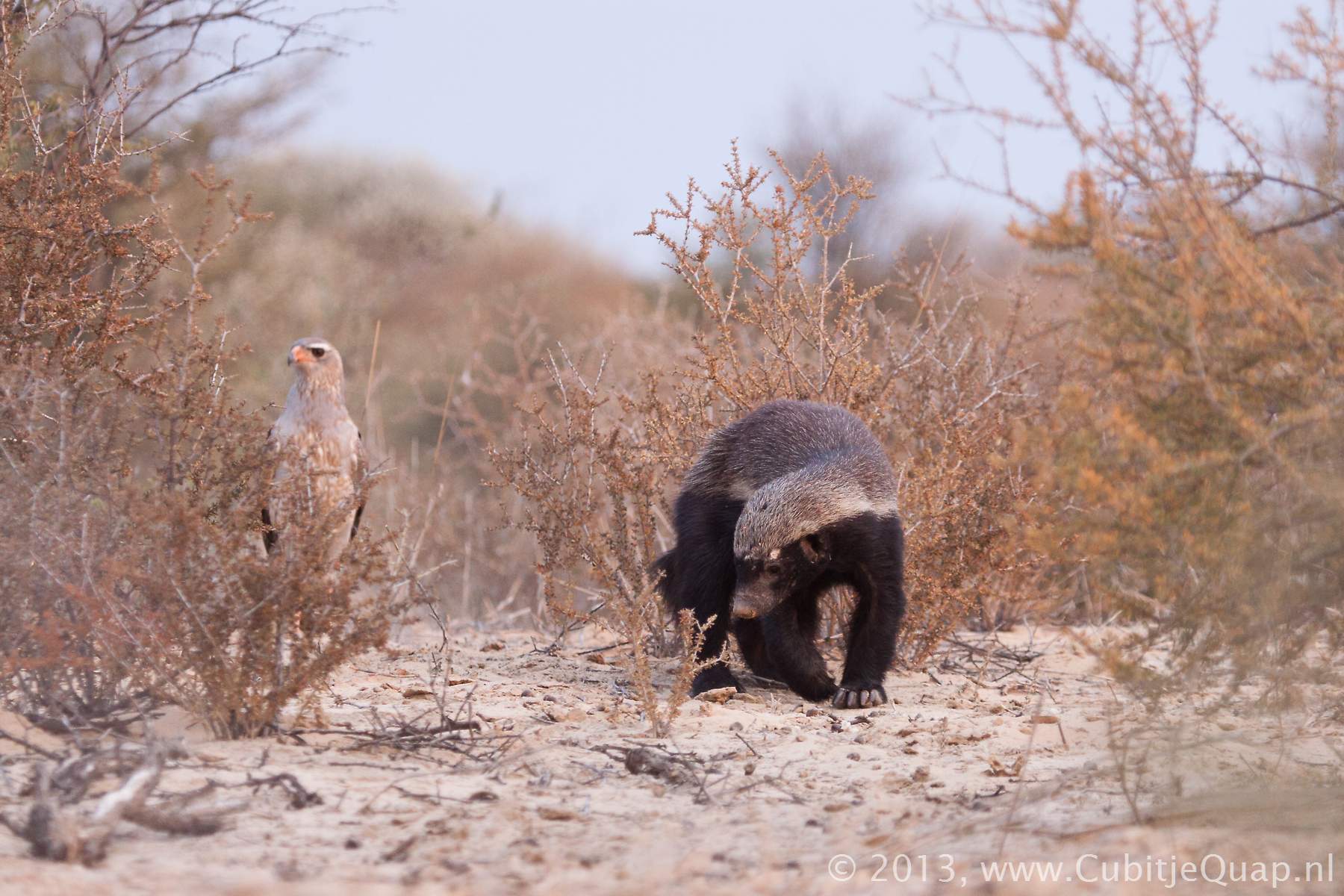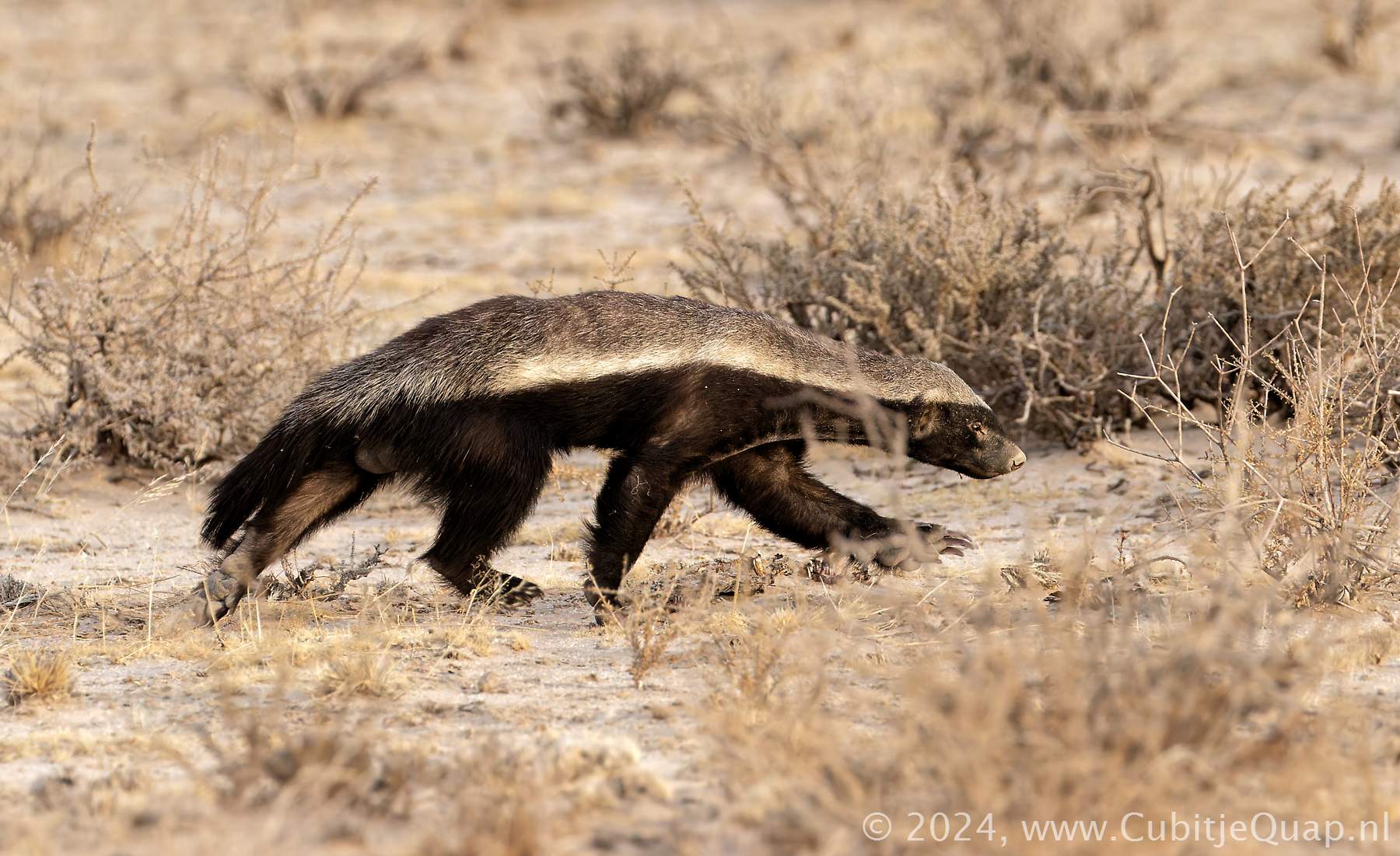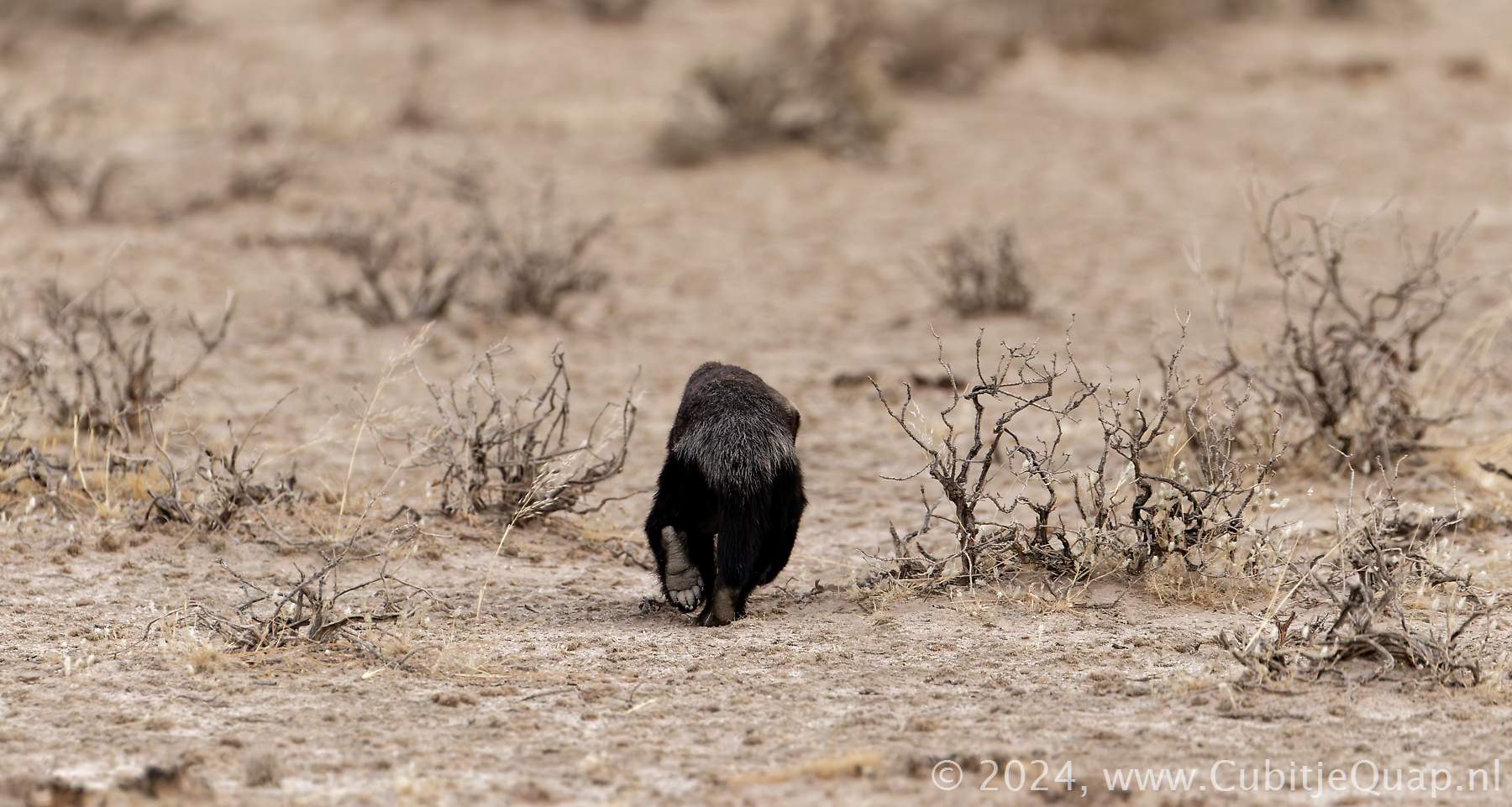Honey badger (Ratel)
Appearance
Total length 90 - 100 cm; tail 18 - 25 cm; shoulder height 30 cm; mass 8 - 14 kg
Unmistakable animal, with its thickset form, silver-grey upperparts and black underparts and legs. Top of head and upper neck usually paler than rest of upperparts. Tail short, bushy and black and often held erect when walking. Ears are small and barely noticable. Spoor distinctive with clear impressions in prints left by long, heavy claws of forefeet.
Habitat
Found in most major habitats, but absent from coastal Namib Desert.
Behaviour
Tough and agressive; records of attacks on elephant and buffalo and also humans when threatened. Usually seen singly, but pairs and family groups may also be observed. Mainly nocturnal, but where not disturbed is active in early morning and late afternoon.
Food
Wide range of food items but insects, other invertebrates and rodents are the most important. Reptiles, birds, other small mammals, wild fruit and carrion are also eaten. Common name is derived from their tendency to break into beehives (both natural and human made) to eat honey and larvae. 'Rogue' individuals may take to killing poultry, sheep and goats.
Kalahari honey badgers
In the Kalahari honey badgers were rarely seen drinking water at the available waterholes, and derived most of their water requirements from their food and from the Tsama melon (Citrullus lanatus) during seasons when they were available.
In the southern Kalahari, honey badgers switch from being predominantly nocturnal in summer to diurnal in winter.
Other
Honey badgers tend to avoid conflict. However, when they attack, they do so fearlessly, clamping on their opponent with 'locked' jaws until it is dead and sometimes even until the honey badger itself gets killed.
Interesting links
WikipediaHoneybadger.com

